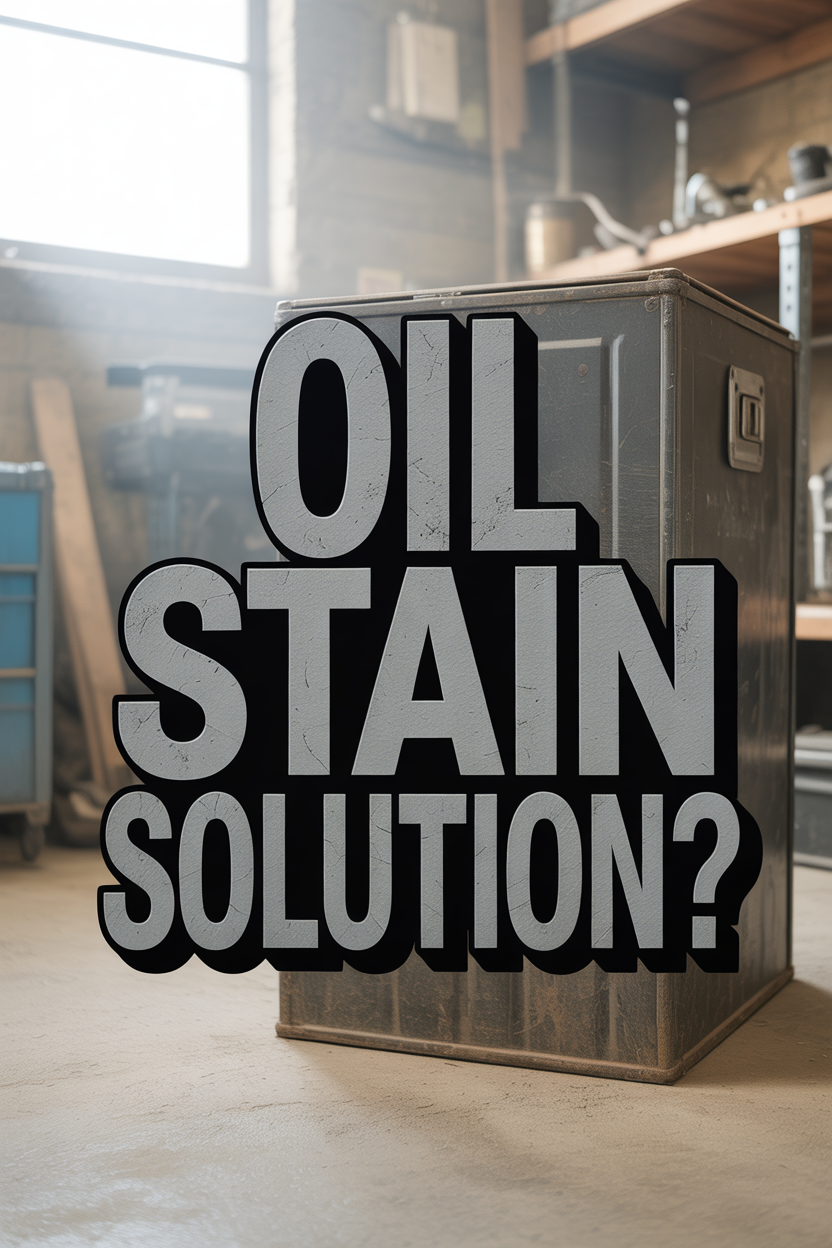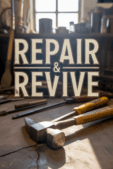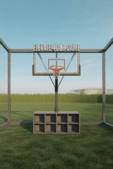Does Kitty Litter Really Clean Oil Stains?
Kitty litter is the classic, go-to solution for soaking up fresh oil spills on a garage floor. For new puddles, its absorbent properties work wonders at preventing a slick mess from spreading. It acts like a sponge, drawing the liquid oil up and away from the concrete surface.

However, for older, set-in stains, kitty litter alone is not enough. Once the oil has penetrated the concrete’s pores, you’ll need a more powerful approach. To truly lift those deep stains, you’ll want to combine an absorbent with a cleaner like a degreaser, laundry soap, or dish soap.
To use this classic method, first blot up as much fresh oil as you can. If the spill is old and goopy, use a paint scraper to remove any excess buildup.
Next, cover the stain generously with cheap, clay-based, non-clumping kitty litter. Use a stiff brush or your shoe to grind the litter into the stain, breaking up the oil and helping the clay absorb it.
Leave the kitty litter on the stain for at least a few hours, or even a full day for the best results. The clay will slowly pull the oil out of the concrete. If the litter starts to look dark or saturated, sweep it up and apply a fresh layer.
Once you’re done, dispose of the oil-soaked litter properly according to your local regulations. Never reuse it for your pets.
Why You Must Act Fast on Fresh Spills
The best way to deal with oil stains is to clean them up immediately. This prevents the fluid from having time to soak deep into your garage floor. Quick action is your best defense against permanent damage.

Think of concrete as a hard sponge. It is a porous material. As experts at AmFam note, oil soaks deep into these pores, causing dark discoloration that becomes incredibly difficult to remove later.
This isn’t just a cosmetic issue. Over time, these absorbed fluids can chemically attack and weaken the concrete. This leaves it vulnerable to future cracking, spalling, and chipping.
Most older cars and even some newer ones will drip fluids here and there. By cleaning spills right away, you preserve the look and structural integrity of your garage floor for years to come.
How to Protect Your Garage Floor Before Stains Happen
An ounce of prevention is worth a pound of cure, especially when it comes to concrete. One cost-effective strategy is to lay down cardboard on the floor under your car to catch any drips before they hit the floor.
For more robust, long-term protection, you can paint or seal your garage floor. As professional-grade product makers like Prosoco confirm, a sealed surface prevents fluids from ever penetrating the concrete.
A penetrating sealer soaks into the concrete to densify the surface, stopping oil from being absorbed. This is an excellent way to protect the floor while maintaining its natural look.
A surface coating like paint, epoxy, or polyurethane creates a complete barrier on top of the concrete. This offers maximum protection, though the application process is more involved than using a penetrating sealer.
If you’re considering a permanent solution to stop stains, we have more detailed guides to help you choose:
Explore your options: Garage Floor Coatings: Epoxy vs. Paint, Which is Better?
Learn about sealers: Protect the Concrete Garage Floor with a Densifying Sealer
How to Use Kitty Litter and a Degreaser on Tough Stains
If you have a stubborn stain that has been on the floor for a while, a chemical cleaner is your best bet. Combining an absorbent with a powerful degreaser is a highly effective method. The chemical breaks down the oil, and the litter pulls the resulting mixture out of the concrete.
For this job, you will need a quality degreaser like Oil Eater, cheap kitty litter, a stiff nylon brush, and a bucket of water. We also recommend using eye protection, gloves, and a face mask for safety.

Start by wetting the stained area with water. Mix a strong solution of degreaser and water, then scrub it vigorously into the stain with your brush.
Let the solution sit for about 15 minutes, but do not allow it to dry. If it starts to dry out, just scrub more of the solution onto the area to keep it active.
Pour a liberal amount of kitty litter over the entire treated area. Grind it in with your feet or the brush to create a thick, absorbent layer.
Let this mixture sit overnight or even longer. The litter will absorb the degreaser along with the oil that it has lifted from the concrete pores.
Finally, sweep away all the litter and discard it. Rinse the area thoroughly with a garden hose until the water runs clear, revealing a cleaner surface.
The Laundry Detergent Trick for Fresh Oil Spills
You can often tackle oil stains using common items you already have at home. This method uses powerful household detergents, water, and some good old-fashioned scrubbing. It is a great option for fresh stains when you don’t have other specialty products on hand.
All you need is a bucket, powdered laundry detergent, water, and a stiff nylon scrub brush. Interestingly, I’ve heard that many NASCAR pit crews use Tide for this very purpose.
This is a particularly effective way to deal with fresh stains. First, scrape or blot away any standing oil on the surface.
Mix a strong, pasty solution of the powdered detergent and a small amount of water. Work this paste deep into the stain with your stiff brush.
Now, let it sit for at least 30 minutes. This gives the detergent’s surfactants a chance to emulsify the oil, breaking it down and lifting it from the concrete.
Crucially, do not let the mixture dry out on the floor. After it has soaked, use a garden hose with a high-pressure sprayer nozzle to blast the residue away.
The “Poultice” Method for Stubborn, Set-in Stains
A poultice is a powerful technique for drawing out the most stubborn, deeply embedded stains. This method involves creating a paste from a powerful solvent mixed with a very fine absorbent material. This is best for small, difficult areas, as it may not be cost-effective for a large stain.
The science is simple but effective. As the solvent in the paste evaporates, it draws the oil out of the concrete, where it becomes trapped by the fine absorbent material. This method is often recommended by concrete cleaning professionals.
For this process, you will need a bucket, an absorbent material like diatomaceous earth or finely ground kitty litter, and a strong solvent such as acetone. You’ll also need a trowel, plastic sheeting, and tape.
In a well-ventilated area, carefully mix the absorbent material with acetone in your bucket. Add enough acetone to create a thick paste with a texture similar to peanut butter.
Use a trowel to smear the paste about a quarter-inch thick over the entire stain. Cover the area completely with plastic wrap and tape down the edges to seal it.
Let the poultice sit undisturbed for a day or two. The solvent will penetrate the oil and lift it from the concrete, where it gets captured by the absorbent.
Finally, remove the plastic and allow the paste to dry completely into a powder. Sweep it away and dispose of it properly.
Quick Fixes for Small Spots and Fresh Spills
For a small, fresh oil spot, you can sometimes use a spray lubricant to loosen the stain quickly. While not the most cost-effective method for large areas, it is a very low-effort approach for minor drips.
For this quick fix, you will need a can of spray lubricant like WD-40 or a heavy-duty oven cleaner, along with a spray hose for rinsing.
Simply spray your chosen product directly onto the stain, covering it completely. Let the product sit and penetrate for about 15 to 20 minutes.
After it has had time to work, use a hose with high pressure to rinse the area thoroughly until the water runs clear. The solvent in the spray helps to break down the oil, allowing it to be washed away.
Be aware that these products can sometimes leave behind their own residue. It’s always a good idea to test them on a small, inconspicuous area first if you are concerned about discoloration.
Modern Cleaners That Make Oil Stains Disappear
The market is full of specialty products designed specifically to remove oil from concrete. We already mentioned Oil Eater, which is an excellent degreaser for tough jobs.
Another fantastic option for smaller stains is Pour-N-Restore. This product is celebrated for its simplicity and effectiveness.
Using it couldn’t be easier. You just pour the liquid directly onto the oil stain.
Then, you simply let it sit. The liquid formula will absorb the oil and gradually dry into a powder.
Once it has completely turned to powder, all you have to do is sweep it up and dispose of it. There is no scrubbing or rinsing required, making it a powerful and effortless solution.
The Eco-Friendly Approach: Oil-Eating Microbes
For those looking for a non-toxic and low-effort solution, bioremediation products offer a completely different way to tackle stains. These cleaners use living microorganisms to literally eat the hydrocarbons found in oil and grease, completely removing the stain.
This is by far the least toxic and lowest effort method for cleaning oil stains, and it works on spills no matter how old they are. Once the oil—their food source—is gone, the microorganisms simply die off, leaving the surface clean.
Eximo is an incredibly popular product that requires no water and minimal effort to apply.
Another top-rated option is Terminator-HSD. With this product, you simply sprinkle it on the stain and spray it with a little water to activate the microbes.
Both products work over time to break down stains without harsh chemicals or heavy scrubbing, making them a safe and effective choice for any garage.
How to Tackle Unsightly Rust Stains
Oil and grease aren’t the only culprits that can stain a garage floor. Rust stains from old tools, metal shavings, or leaky water heaters are also common. These require a different approach than oil stains.
For rust, mild acidic solutions work best. As home care guides advise, the acid in these cleaners helps dissolve the iron oxide that makes up the rust stain.
A simple and effective solution is plain white vinegar or a citrus-based cleaner. Simply pour it on the rust stain, let it sit for a while, and then scrub with a brush before rinsing.
Some people recommend using fresh lemons, but frankly, I’d rather make lemonade and use the cheaper, more effective vinegar on the floor. You may need a few passes depending on the severity of the stain.
If you don’t find success with vinegar, commercial products like Oil Eater Original are also formulated to work on rust.
A Critical Warning: Why You Should Never Use Muriatic Acid
While browsing forums or seeking advice, you might come across suggestions to use muriatic acid to clean your concrete garage floor. Do not do this.
Muriatic acid is a powerful and dangerous substance that professionals use to etch concrete. Etching means abrading the top layer of the concrete, usually in preparation for refinishing it.
As confirmed by industry experts, acid does not absorb or break down oil. It only eats away at the concrete itself, weakening the surface without actually removing the oil stain that has soaked in.
Beyond its ineffectiveness for oil, muriatic acid is highly toxic and extremely dangerous to handle without proper training and protective gear. It can cause severe burns and release harmful fumes.
Using this acid fails on two critical counts: it doesn’t solve your problem, and it permanently damages the floor you are trying to preserve.
So, What’s the Best Way to Clean Your Garage Floor?
While kitty litter is a classic, low-cost solution for fresh oil spills, it often isn’t enough to tackle tough, older stains that have embedded themselves deep into your garage floor. Its power lies in absorption, which is most effective on wet, surface-level liquids.

It is always a good idea to keep a bag of cheap, clay-based litter on hand for emergencies, along with some heavy-duty paper towels or shop rags. Acting fast is key.
For a truly clean floor free of old, set-in stains, you will likely need to use something stronger. A dedicated degreaser, a poultice, or a modern specialty cleaner will deliver the results you’re looking for.
After you’ve invested the effort to get your floor clean, make sure you protect it from future abuse. Read about your best options here: Should I Paint my Garage Floor?









